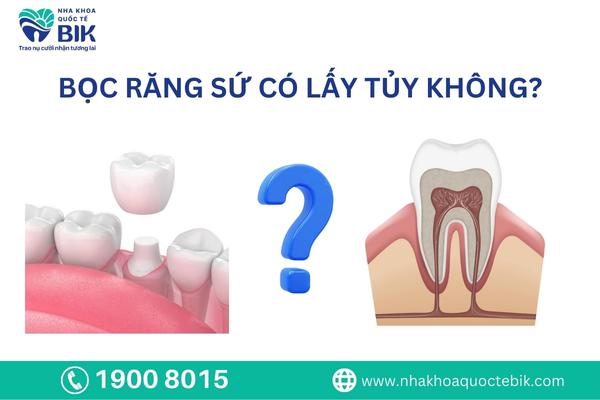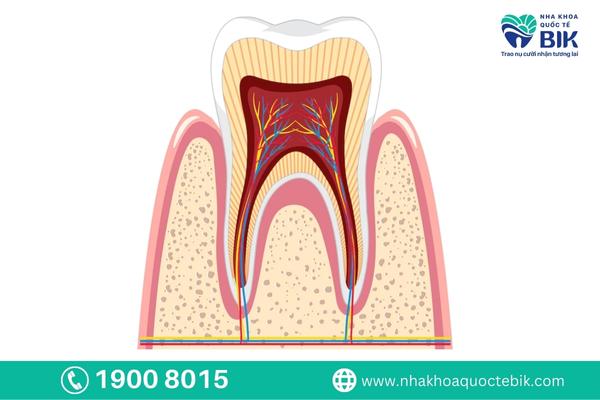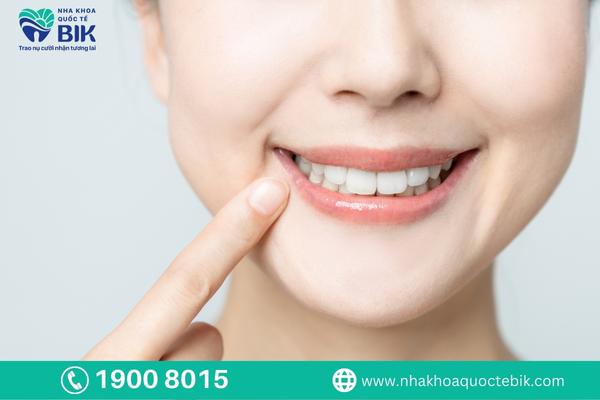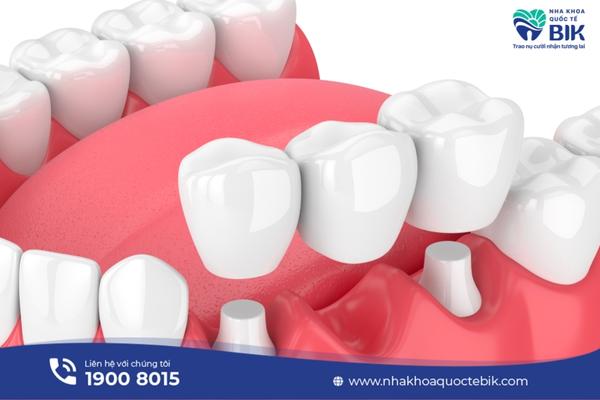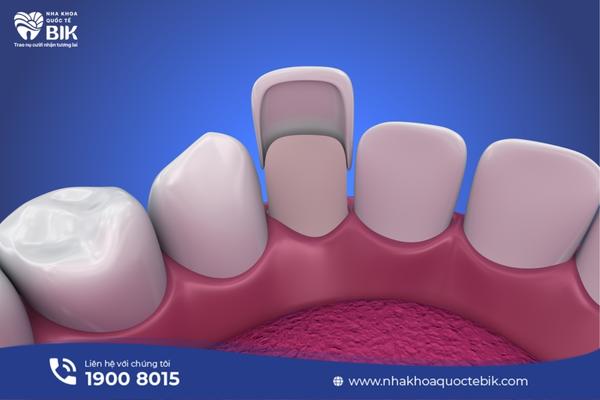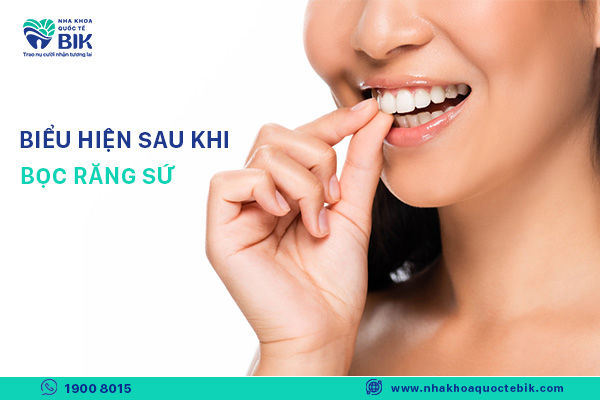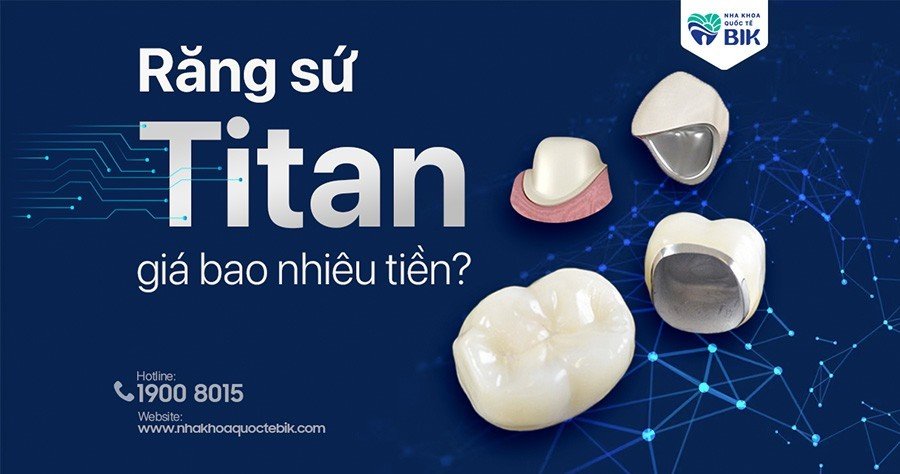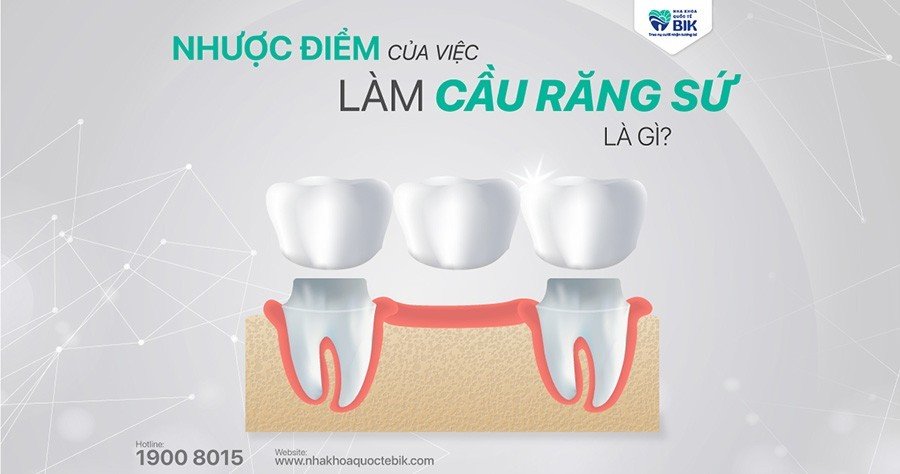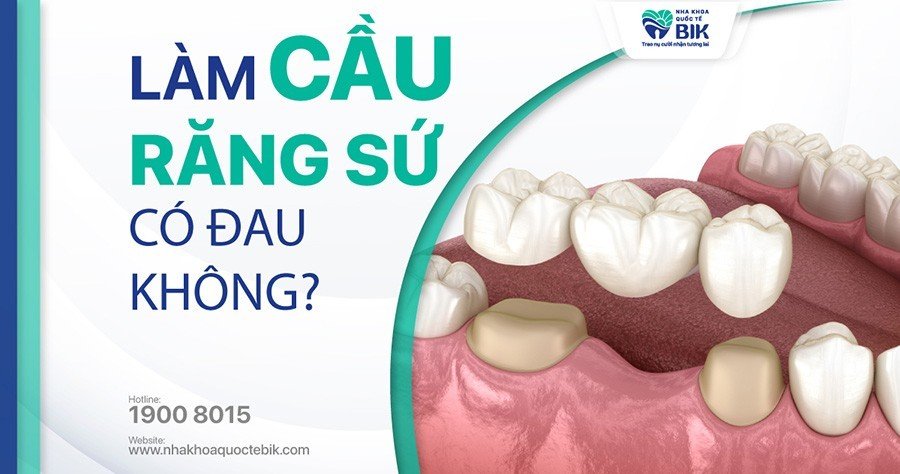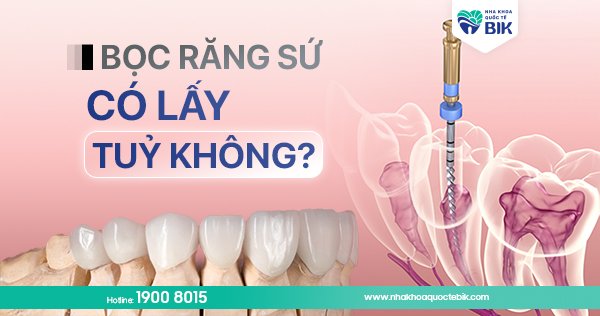
The tooth pulp is an important part containing blood vessels, nerves and connective tissue deep inside the tooth and if the root canal is removed, it will become weaker due to the loss of life. Therefore, removing the root canal is something that no doctor wants. Therefore, the doctor must consider each specific case to decide whether to remove the root canal before having a porcelain crown. So does it hurt to have a porcelain crown after a root canal? Let’s find out with BIK International Dentistry!
1. Do you need to remove the pulp when applying porcelain crowns?
The doctor will remove the pulp when applying porcelain crowns in the following cases:
1.1. Remove the pulp when the tooth is severely decayed
When the tooth is decayed and the decay has spread to the pulp, the pulp will become infected, causing pain. If you only scrape the deep tissue and then cover it with porcelain immediately without performing root canal treatment, the tooth will definitely hurt again after just a few days.
1.2. Root canal treatment for severely protruding or misaligned teeth
Porcelain crowns will c
need to remove the root canal in cases of severely protruding or misaligned teeth. Because the process of porcelain crowns requires grinding down the real tooth before being able to attach the porcelain crown, if the root canal is not removed, the root canal can easily be damaged when grinding the tooth. Therefore, to ensure safety and avoid pain for the customer, the doctor will perform root canal treatment before applying porcelain crowns.
1.3. Trauma to the tooth
Teeth injuries such as large cracks or chips can deeply affect the pulp when the protective dentin is lost. In this case, the root canal must be removed before applying porcelain crowns to ensure safety.
2. Does root canal treatment have any effects?
The dental pulp is a special connective tissue consisting of blood vessels and nerves, shaped like fibers and located in the pulp cavity in the middle of each tooth. The pulp is surrounded and protected from harmful agents by the hard tissues of the tooth including enamel and dentin. The dental pulp plays an important role in nourishing the tooth tissue, regenerating dentin tissue, protecting the tooth and providing sensation to the tooth during chewing.
Root canal treatment is a procedure in which the dentist will remove the affected pulp. At this point, the teeth are considered dead because they no longer have pulp and nerves. At the same time, the teeth are no longer nourished and have no inner core, so they become weaker and more vulnerable. Therefore, doctors often prescribe porcelain crowns after root canal treatment to protect the teeth from factors that can damage the root canal treated teeth every day.
3. Does it hurt to have porcelain crowns after root canal treatment?
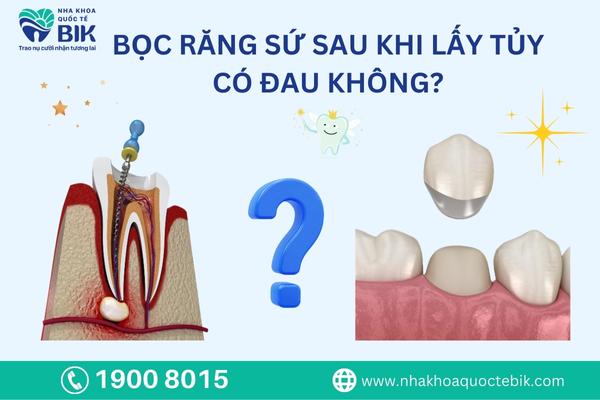
Both the root canal treatment and porcelain crown procedures do not cause pain to the customer. After the root canal has been treated, the doctor will proceed to crown the tooth according to the correct procedure. With the outstanding development of modern technology and machinery
Usually, doctors will perform local anesthesia before removing the pulp to minimize pain during treatment. Teeth after root canal treatment are no longer as sensitive as before, so the porcelain crown process is quite gentle.
In addition, the doctor’s skill is also one of the other factors that affect whether porcelain crowns after root canal treatment are painful or not. If porcelain crowns are performed by a doctor with many years of experience with precise and gentle manipulation, there is almost no feeling of pain.
4. Why is it necessary to cover the tooth with porcelain after root canal treatment?
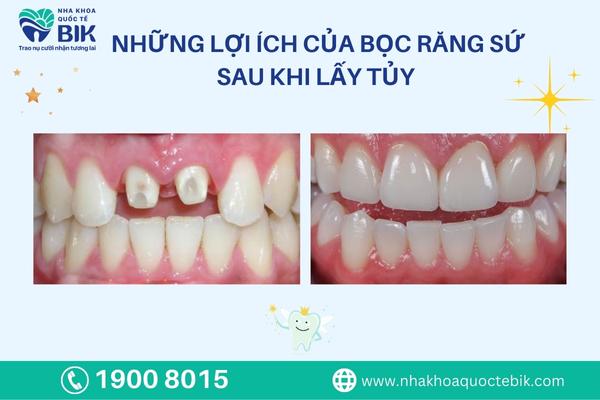
Covering the tooth with porcelain immediately after root canal treatment brings the following benefits:
4.1. Maximum protection of real tooth tissue
When the tooth loses its inner pulp, it becomes very weak against normal external impacts. Therefore, if not carefully protected, it is often very easy to break during chewing. When the porcelain crown is attached to the tooth, it will act as a solid protective layer, not only helping the tooth avoid chewing pressure but also increasing its resistance many times over.
4.2. Ensuring aesthetics
The method of filling teeth after root canal treatment often does not ensure aesthetics because the color is not natural. In addition, the filling material is very easy to peel off after a short time of use.
With porcelain teeth, the color, shape or size can be adjusted to match the real teeth and bring the highest aesthetic value. If you just look at it with the naked eye, it is very difficult to distinguish which teeth are fake.
4.3. Preventing tooth decay
The porcelain enamel layer is completely unaffected and attacked by tooth decay bacteria, so covering teeth with porcelain after root canal treatment is the perfect solution to prevent tooth decay from recurring. Therefore, just clean the tooth root thoroughly every day so that bacteria cannot penetrate and attack the real teeth inside.
5. Cases where porcelain crowns do not require root canal treatment
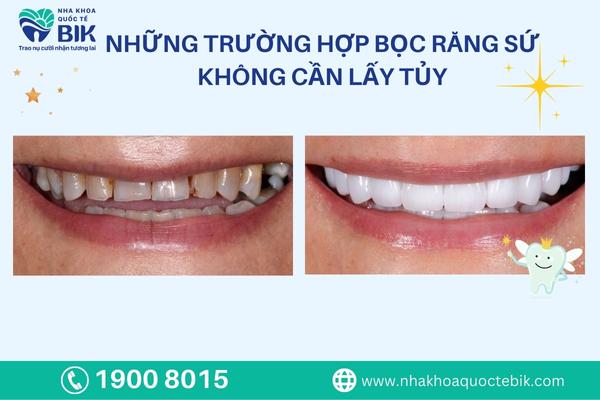
There are still cases where root canal treatment is not necessary when getting porcelain crowns:
5.1. Discolored teeth
Although today’s high-tech teeth whitening methods are quite effective, they cannot remove all stains. Certain stains such as tetracycline or fluoride stains cannot be removed by whitening treatments, either at home or at the dentist. Therefore, porcelain crowns are often used in these cases to cover up yellow teeth, restoring a bright white smile.
5.2. Chipped teeth
If the tooth is only slightly chipped and has not affected the inner pulp, there is no need to perform a root canal. The tooth only needs to be covered with porcelain to avoid pain and restore its original aesthetics.
5.3. Mildly decayed teeth
If the tooth decay has not spread and invaded the pulp, it is only necessary to completely remove the decay and apply a porcelain crown to prevent the tooth decay from recurring.
6. Teeth care after root canal treatment
Teeth after root canal treatment are often not as healthy as before, so they also need special care:
6.1. Change your diet and eating habits
Teeth after root canal treatment often cannot feel food, so you need to pay attention to limit foods that are too hard and chewy. In addition, foods that are too hot or too cold can also cause sensitive teeth to not adapt in time, leading to cracking and breaking.
In addition, patients need to change their eating habits by chewing carefully, chewing slowly and avoiding using too much force on the treated tooth to chew because it will damage the tooth.
6.2. Ensure good oral hygiene
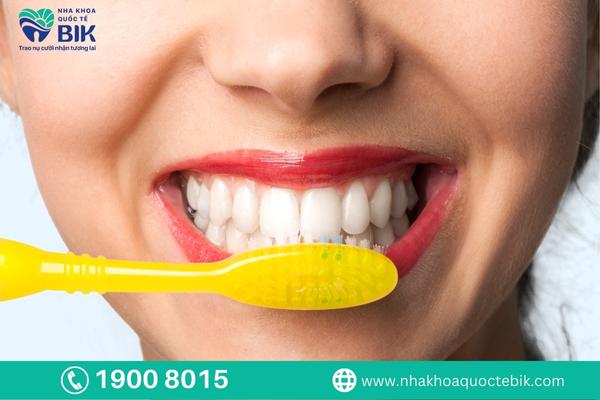
Brush your teeth regularly with fluoride toothpaste to support healthy teeth. You should combine the use of dental floss to remove leftover food between teeth, ensuring your mouth is always clean.
6.3. Regular check-ups
Patients should visit a dental facility as directed by their doctor every 3-6 months so that their oral health is always specifically monitored. From there, any oral diseases can be treated promptly and safely.
Hopefully through the above article you have answered the question: Does porcelain crowns hurt after root canal treatment? If you have any questions about root canal treatment, you can contact BIK International Dental Clinic directly, the doctors will answer you as soon as possible!

